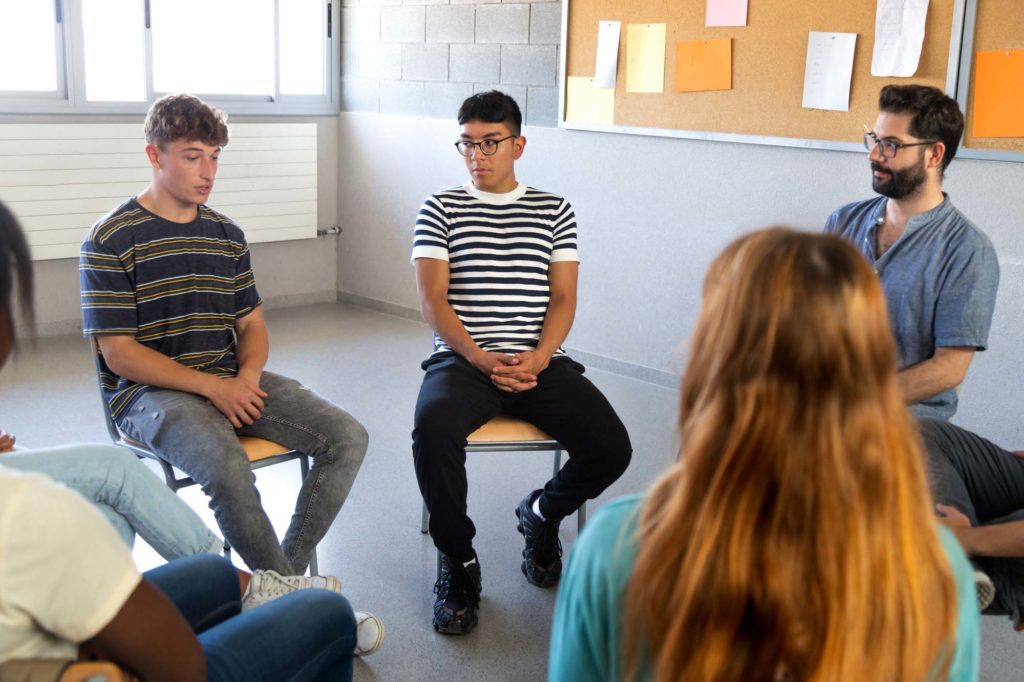Detention Fails to Help Young Lawbreakers Avoid Further Offenses, Report Shows
Elizabeth Cauffman (University of California, Irvine), Marie L. Gillespie (University of California, Irvine), Jordan Beardslee (University of California, Irvine), Frank Davis (Alternate Public Defender’s Office, Orange County, California), Maria Hernandez (Superior Court of California, Orange County), and Tamika Williams (District Attorney’s Office, Orange County, California)

Psychological Science in the Public Interest (Volume 24, Issue 3)
Read the Full Text (PDF, HTML)
Youth who are caught stealing, using illegal drugs, or committing other moderate crimes are far less likely to reoffend when they receive therapy, life-skills training, and other rehabilitative help rather than legal punishment, a growing body of research shows.
These findings underscore efforts in many states to implement programs that protect young people who engage in crime from reoffending and spiraling into a life of hardship, according to a new report published in Psychological Science in the Public Interest. Increasingly, policymakers are recognizing that processing youth through the courts may cause long-lasting psychological harm at a critical time in their development.
“If policymakers could take away one finding from the research summarized in this article, it would be that formal sanctioning, (e.g., court appearance) was never related to better life outcomes … for youths charged with moderately serious offenses,” the report states.
A PSPI Live webinar recording associated with this article is available to APS members and registered attendees: Developmental Science Research Informs Juvenile Justice Reform
The authors of the report include APS Fellow Elizabeth Cauffman, developmental psychologist Jordan Beardslee, and clinical psychologist Marie Gillespie, all of University of California, Irvine; Frank Davis of the Alternative Public Defender’s Office in Orange County, California; Judge Maria Hernandez of the Superior Court of Orange County; and Tamika Williams, Orange County deputy district attorney.
The report outlines 20 years’ worth of developmental science, including two large, long-term studies, both co-led by Cauffman, involving adolescent boys and men in early adulthood who become entangled in the justice system.
Criminal behavior tends to peak in late adolescence and decline in early adulthood. And most youth, even those charged with serious felonies, become law-abiding adults, Cauffman and her co-authors emphasize. But several factors heighten individuals’ risk for ongoing offending, including:
- antisocial traits,
- substance use,
- poor impulse control,
- low expectations for the future,
- perceptions of the justice system as unfair,
- parental neglect,
- school suspension or expulsion, and
- community poverty and violence.
The authors also point to racial inequities in judicial sanctions on youth. Research shows that adolescents of color are arrested, referred to juvenile court, subject to harsher sentences, and tried as adults more than White youths. One study indicated that Black boys and young men were rearrested more often than their White peers despite equal or even lower rates of offending.
The authors suggest that juvenile justice policymakers not only minimize formal processing and detention for youths who commit lower-level offenses but expand diversion programs and other alternatives to jail time.
“Adolescents are continuing to change and the response to their behavior should be developmentally appropriate,” Cauffman said. “How we respond to young people in the justice system matters. And if we want to improve community safety, we should use the science to guide both policy and practice.”
These reforms should apply not only to adolescents but to individuals transitioning into adulthood, as research has shown that the human brain continues maturing into a person’s mid and late 20s. A promising concept is the young adult court (YAC), a specialized program for individuals ages 18-25, the authors noted. They are conducting a randomized control trial in Orange County to examine differences between young adults who are processed through a YAC versus traditional means. Young men in the YAC are supervised for at least 18 months by the court and specially trained probation officers. The youth receive help with life skills, employment, health, housing, and education. A judge can dismiss or reduce charges against those who complete the program.
Related content: The Psychological Science Behind Childhood and Adolescent Mental Health
“We hope to understand the extent to which involvement with the YAC is related to short- and long-term positive outcomes in behavior, mental and physical health, school and work, and other domains,” the authors wrote.
In a commentary accompanying the report, Felice Upton, Assistant Secretary of Juvenile Rehabilitation for Washington State, argued that strengthening educational and vocational training programs with juvenile detention facilities also stands to help lift young offenders’ life trajectory. She also emphasized the importance of addressing detained youths’ psychological problems, noting that a high number of individuals entering the juvenile justice system in her state meet a diagnosis for complex post-traumatic stress disorder. Prior research has linked mental health disorders with delinquency.
“Bringing systems and science together to find solutions is essential to help young people desist from criminal justice system involvement,” Upton wrote.
Feedback on this article? Email [email protected] or login to comment.





APS regularly opens certain online articles for discussion on our website. Effective February 2021, you must be a logged-in APS member to post comments. By posting a comment, you agree to our Community Guidelines and the display of your profile information, including your name and affiliation. Any opinions, findings, conclusions, or recommendations present in article comments are those of the writers and do not necessarily reflect the views of APS or the article’s author. For more information, please see our Community Guidelines.
Please login with your APS account to comment.